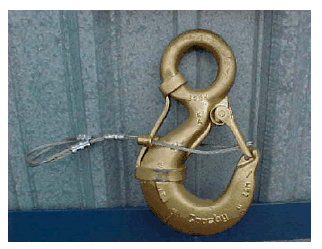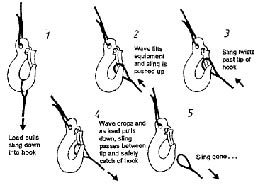Inappropriate use of snap hooks
A member has reported that, in spite of efforts to prevent the practice, regular incidents involving the inappropriate use of hooks have continued to occur. A number of incidents have been reported, including dropped objects, accidentally released buoyancy and near misses.
This issue concerns the use of snap hooks when handling or deploying loads instead of shackles or ‘safety’ type hooks with load capable latches. It is necessary to use these because some loads are capable of ‘floating’ during transition through the splash zone and/or during transit through the water column.
The most common incidents involve dropped objects. These occur because of the relationship between the surface area and mass of the object being lifted, combined with water resistance, as well other factors such as vessel movement and winch speed. When snap hooks are used in such circumstances, the gates or latches can be opened or broken by the rigging and the load is at risk of being dropped.
Our member made the following recommendations:
- All loads should be checked for the likelihood of this happening in line with existing industry-wide engineering and rigging good practice;
- Only suitably trained people should be used to select the appropriate rigging and sling loads for lifts;
- All non-engineered subsea load handling should use shackles or safety hooks rather than snap hooks;
- Snap hooks can be used for loads where there is no risk of the load becoming ‘light’ during the transit to/from deck. They should not be used unless the operation has been thoroughly checked and endorsed by competent personnel.
Our member notes that suppliers have been approached to address the latch design issue and analyse potential strength upgrades. New safety hook designs that can be operated by an ROV operable are being evaluated.



Members may refer to IMCA document Guidelines for lifting operations for further information.
Safety Event
Published: 27 January 2011
Download: IMCA SF 01/11
IMCA Safety Flashes
Submit a Report
IMCA Safety Flashes summarise key safety matters and incidents, allowing lessons to be more easily learnt for the benefit of all. The effectiveness of the IMCA Safety Flash system depends on Members sharing information and so avoiding repeat incidents. Please consider adding safetyreports@imca-int.com to your internal distribution list for safety alerts or manually submitting information on incidents you consider may be relevant. All information is anonymised or sanitised, as appropriate.
IMCA’s store terms and conditions (https://www.imca-int.com/legal-notices/terms/) apply to all downloads from IMCA’s website, including this document.
IMCA makes every effort to ensure the accuracy and reliability of the data contained in the documents it publishes, but IMCA shall not be liable for any guidance and/or recommendation and/or statement herein contained. The information contained in this document does not fulfil or replace any individual’s or Member's legal, regulatory or other duties or obligations in respect of their operations. Individuals and Members remain solely responsible for the safe, lawful and proper conduct of their operations.
